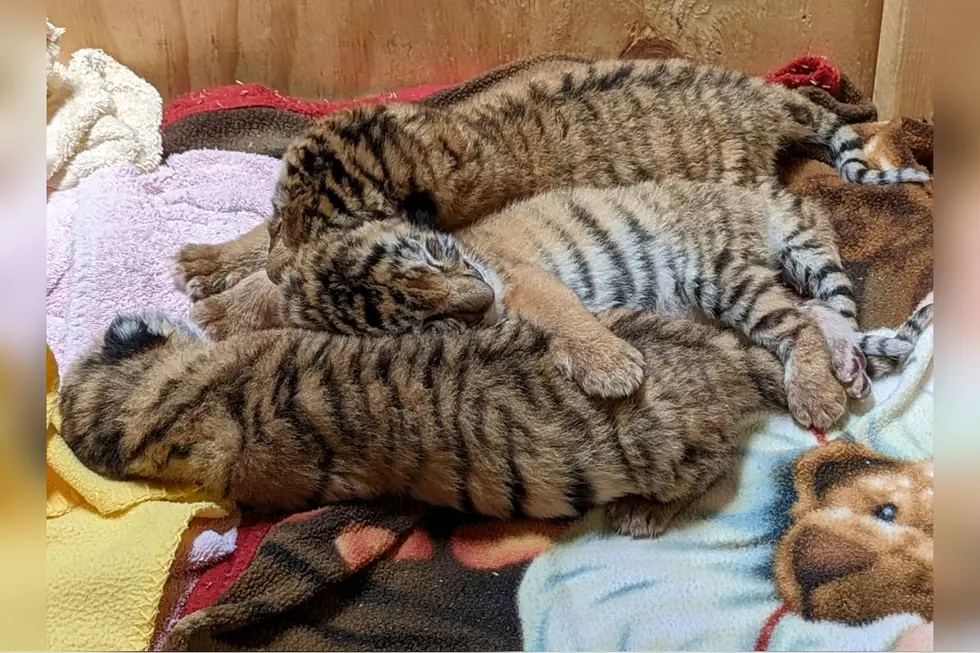
Indiana Zoo Welcomes Triplet Tiger Cubs – See Adorable Photos and Video
My granddaughter is going to be so excited when I show her these cute little tiger cubs. Living in Terre Haute, she has a yearly pass to the Indiana zoo and adores tigers.
Here is a photo of the Indianapolis Zoo when we went to visit last year.
Of course, she wanted to ride the tiger on the carousel. The news of the new tiger cubs will make her very happy.

Three tiger cubs were born at the Indianapolis Zoo
On May 27, 2022, the Indianapolis Zoo welcomed three new arrivals. The triplets, one female and two males were born to a 7-year-old Amur tiger named Zoya and a 14-year-old father named Pavel.
According to Indianapolis Zoo Public Relations,
Zoya is well and healing and the cubs are healthy and enjoying the TLC from the animal care team. . It is unlikely the cubs will ever be introduced to or in the same space with Zoya. Tigers are solitary by nature and Zoya is not raising them. Our animal care team is doing an amazing job hand-raising the cubs – they will be bottle-fed for 12 weeks.
Why is the birth of these tiger cubs so special?
The main reason is that Tigers are considered to be endangered animals. In some areas of the world, entire subspecies of tigers are already extinct.
While there are nine tiger subspecies, as of 2022, only six of these subspecies remain. Three species—Javian, Bali, and Caspian—have gone extinct, with the remaining six species endangered. And not only are tigers endangered, but their population is steadily decreasing.
Why are tigers going extinct?
Tigers have lost an estimated 95% of their historical range. Their habitat has been destroyed, degraded, and fragmented by human activities. The clearing of forests for agriculture and timber, as well as the building of road networks and other development activities, pose serious threats to tiger habitats.
The more our human population grows, the more animals we will lose to extinction. That is why conservation and education through zoos are so important.
Take a look at these adorable newborn tiger cubs.
Indianapolis Zoo triplet tiger cubs newborn photoshoot
Just like human babies, newborn cubs need a lot of sleep.
Zoo keepers will bottle feed the babies for 12 weeks.
The babies are safe and well taken care of by the zoo staff.
OMG! Look at the cute little face.
Watch the tiger cubs at the Indianapolis Zoo in their tiger nursery
What are the names of the tiger cubs and when will the public be able to see them?
At this point, the cubs have no names. But the zoo says,
The Zoo will launch a community campaign in July to help name the cubs. Watch for that on social media. We will also put out weekly updates on the terrific tiger trio. The cubs will make their public debut at about 16 weeks in mid-September.
WATCH OUT: These are the deadliest animals in the world
LOOK: Stunning animal photos from around the world
More From WDKS-FM









